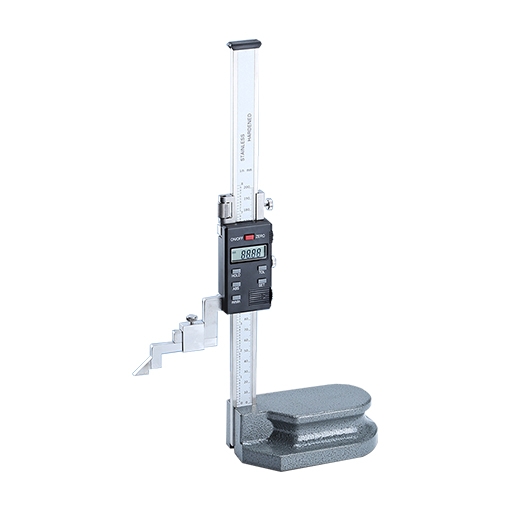A height gauge is an instrument placed on a platform, ideally a granite platform, for single-axis measurements. It is a full-featured measurement system that combines a platform with an altimeter. The full-featured altimeter is mainly used for online or batch testing, and can be measured directly on one or a group of machine tools, especially for workpieces with high size requirements. The digital height gauge is very useful for debugging and sampling inspection during production.
The height gauge can help us in our daily work, so what should we pay attention to when choosing a height gauge? Next sisco will tell you some tips about how to choose a height gauge.
What is a Height Gauge?
A Height Gauge is a measuring tool used essentially to determine a height, but not only. In fact, it can measure internal and external dimensions, steps, heights, depths and distances. It is composed of a support base, a column installed vertically on it, and an internal mechanical system that determines the vertical movement along a carriage of a measuring probe, usually with a sphere as a terminal, which determines the acquisition of the position of that point with respect to a reference. The position of the element to be detected is acquired through an optical reader, mounted on the trolley, which reads an optical line fixed on the instrument column. The detected signal is then displayed on a control panel of the instrument, where it will then be possible to carry out a whole series of calculation operations among the acquired elements.

How to choose a height gauge?
- Determine the range and determine the range of the height gauge with the actual large size of the workpiece. Typically, height gauges have a range between 350 and 1000mm and will be less accurate in the 1000mm range.
- Determine the accuracy. The accuracy of the height gauge is determined by the dimensional tolerances of the workpiece. Usually, the selected precision error is not more than 1/3 of the dimensional tolerance.
- One-dimensional or two-dimensional. If you are only measuring height steps or diameter/radius measurements or straightness measurements, you only need to select the 1D type. The 2D type of height gauge is just more like 2D distance, automatically calculating angles and other auxiliary functions.
- Choose whether to be automatic or manual according to operational efficiency, operational convenience and cost budget.
- Install the placement environment. If it is placed in a harsh environment such as a workshop, please choose a highly protected height gauge.
- Selecting the necessary optional accessories according to actual needs, such as granite measuring board and bracket, special measuring head, lever gauge or thousand indicator gauge.
Height gauges applications
This type of instrument is an essential partner for ease of use, reliability and versatility. Every company should have a height gauge for the wide range of applications and functions they can perform. This tool, in fact, is used for 1D measurements of heights, distances, diameters, center distances, inclinations, orthogonality. In the most advanced systems it is possible to create a second measuring axis, based on the rotation of the piece by a known angle, for the estimation of elements in 2D.


